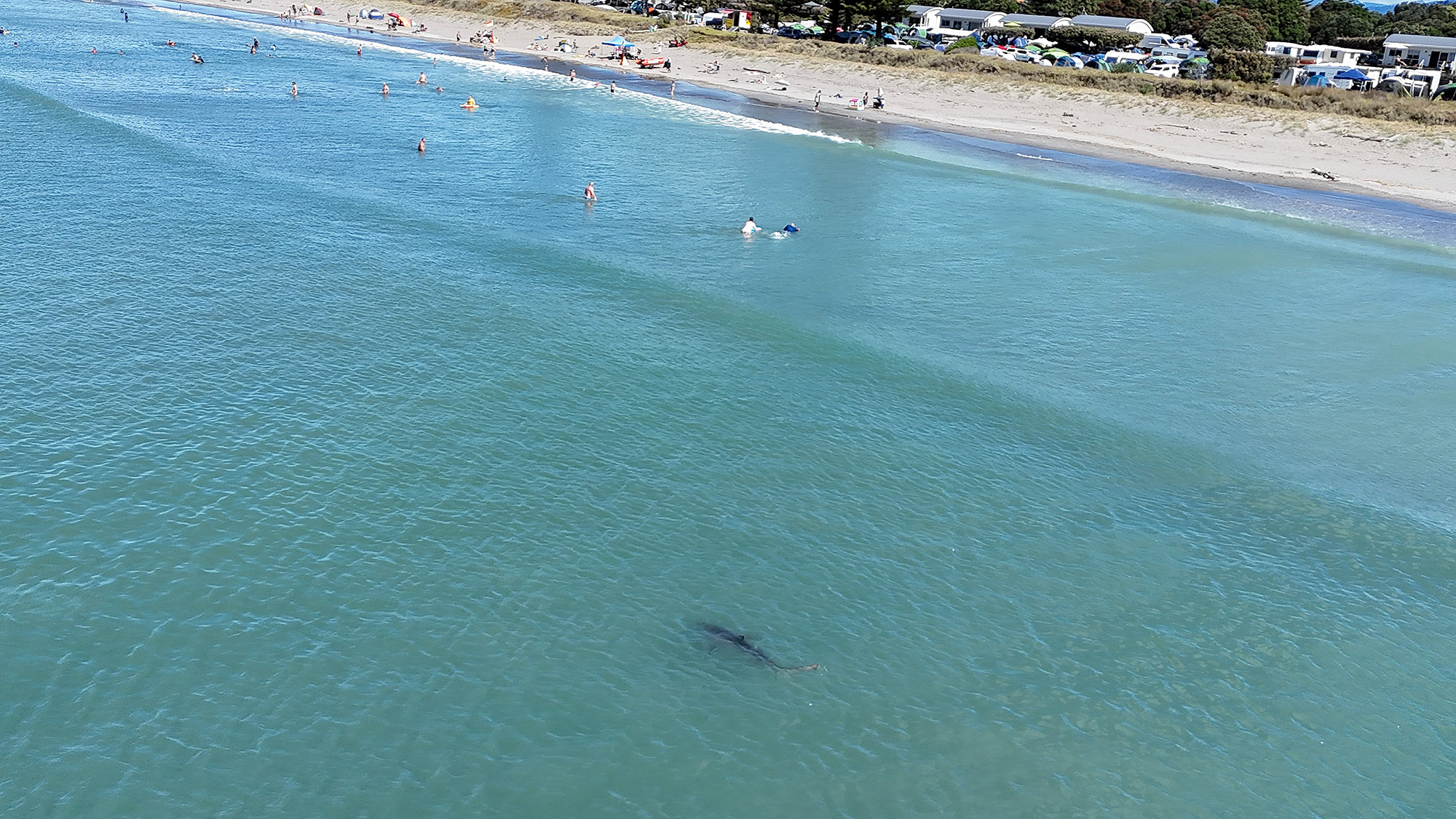Sharks a common sight at Ōhope

SHARK SPOTTING: Chris Service got this shot of a 2.5 metre bronze whaler at Ōhope Beach last Friday as it swam towards a flagged swimming area. Photo supplied
Brianna Stewart
Sharks have been a common sight at Ōhope Beach recently as people flock to the water to beat the summer heat.
Mount Maunganui builder Chris Service was in the water last Thursday afternoon with some friends and their children when they had their first encounter with a shark.
Mr Service and his friend’s 10-year-old son were surfing in shoulder-deep water while another friend and the boy’s brother were in shallower water.
A shark about six feet long swam between the two groups, giving the boy closest to shore the fright of his life.
“My mate’s son pretty much ran on water to get out.”
Mr Service suggested to his young surf buddy they should head in, but didn’t say anything about the shark to avoid frightening him.
“He said, 'nah, one more wave'. I said, 'nah, let’s head in'.
“Once we got to knee-deep water, I told him about the shark, and he said, 'lucky you didn’t tell me while we were out there'. I just didn’t want him to freak out when we were out that deep.”
The next day Mr Service was back at the beach and decided to put his drone up to see if he could find a shark in the surf. He had success within a minute.
He followed the shark for a while, then as it moved closer to the flagged area, he realised no one had noticed it.
“So, I brought the drone lower, about three metres above the water, and that’s when they realised I was following a shark.

“They then advised everyone to get out of the water.”
Mr Service was undeterred by his recent shark sightings and went for a surf later that afternoon with his mates.
At first they were hesitant about the kids tagging along, but about 45 minutes later they were in the water too.
“It’s good for them to not be worried,” he said.
“It’s the sharks’ home we’re entering, and we need to respect them.”
Mr Service sent his footage of the shark to marine biologist and “Shark Man” Riley Elliott, who helped identify it as a bronze whaler.
Recently, one swimming area patrolled by lifeguards was closed three times in one day because of a shark nearby.
Whakatāne Surf Life Saving Club captain Catriona Manning said it was policy to close the beach for 30 minutes when a shark was spotted between the flags or heading directly towards them.
She said although beaches had been closed several times already because of sharks and there was plenty of chatter on social media about them, there was likely the same number as any other summer.
“It is that time of year; the water is nice and warm, and they are coming in quite close.
“It always happens at this time of year, and they’re spotted more because there are more people on the beach.”
Mrs Manning thought there were several factors contributing to the talk about sharks, including that the fish tended to spend more time in the warm shallow waters during summer, the holiday period meant there were more people at the beach to look for them, and with patrols at both the campground and surf club, more people were affected when the beach was closed because of them.
The surf lifesaving club receives frequent reports of sharks near the beach, but Mrs Manning said lifeguards would not be rushing out on boats to scare them off.
“There is no point, and they will swim past. Generally, they aren’t aggressive, and they are just going about their normal business.”
She said the shark sightings were not a reason for people to avoid swimming and it was best to just calmly exit the water if one was seen outside the flagged area.
When the shark had passed, swimmers could re-enter the water.
“But if you want to be really safe, you can swim between the flags.
“There, lifeguard have got binoculars and will warn you if they see them.”
Lifeguards are patrolling 10am-6pm in the peak season, with paid guards on weekdays and volunteers on weekends.
According to the Department of Conservation, some shark species move inshore during summer to pup and feed.
While most sharks cause no trouble, it is recommended that swimmers exercise caution.
“If you're in the water, don't panic as this will put you at risk of appearing injured. Instead, calmly exit the water while letting others know of the potential danger.”
It was also recommended that swimmers avoid main channels, places where there are a lot of birds diving, or fishermen berleying.
“Do not harass or grab a shark, even a small one – sharks only have two forms of defence, to swim away or bite.”
Whakatāne Surf Life Saving Club can be phoned on 07 312 4676 for updates on swimming conditions before beachgoers head for the water.